
Statistics show that Facebook is the most popular social network in the world, with an audience of over 3 billion people. For this reason, the platform is highly favored among arbitrageurs, as it provides traffic for any offer across all verticals.
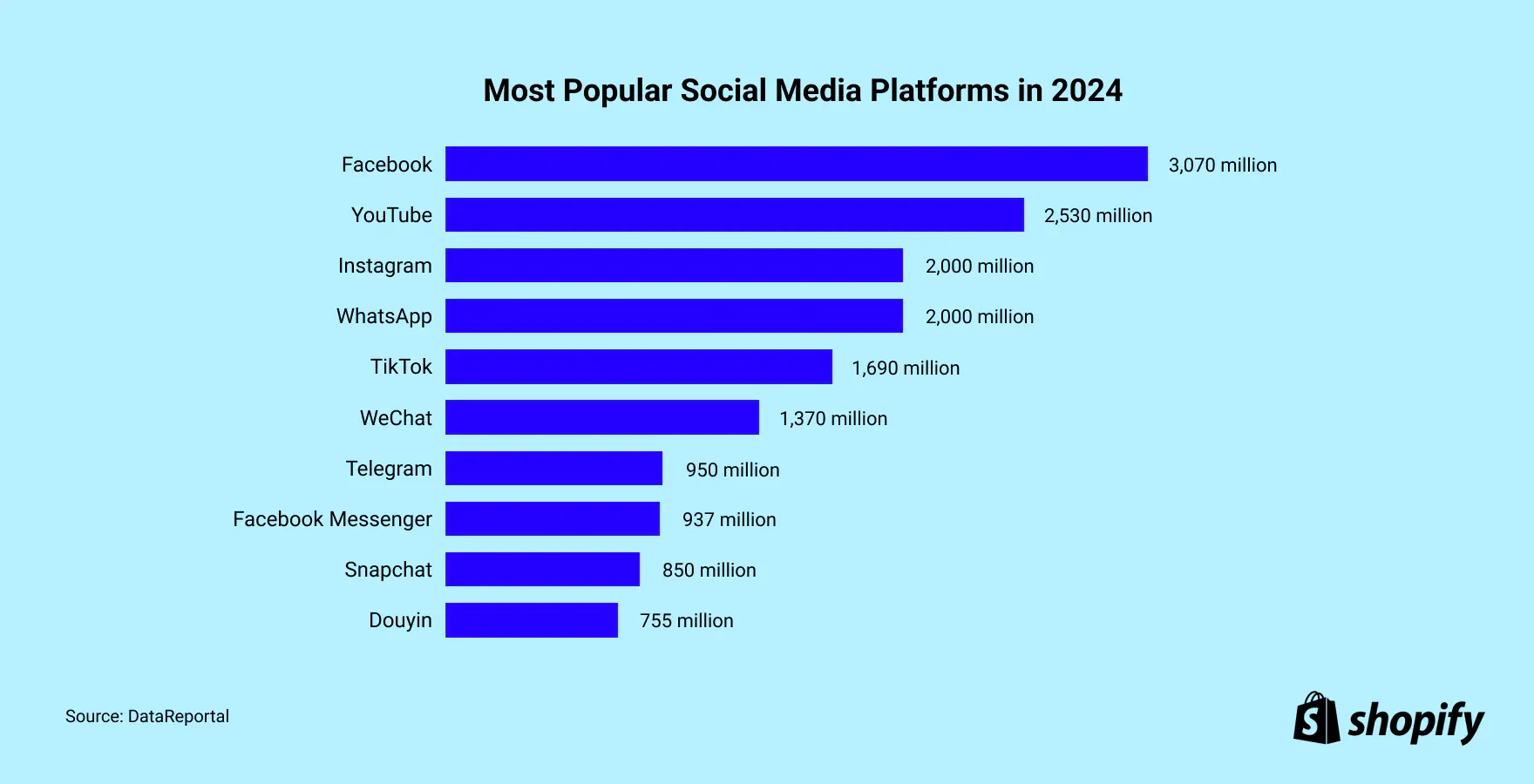
To run ads on Facebook, you will need dozens of profiles. The platform meticulously monitors user activity and issues bans for even minor infractions. Today, we will explain how to farm accounts for advertising on this platform.
Read on to find out what you need for profile farming and how the entire process works. At the end of the article, readers will receive a bonus that provides tips on how to further enhance the trustworthiness of their farmed accounts.
Read next: Replicate $250/day with push monetization, Use AI in arbitrage and Master adult traffic end-to-end.
To farm accounts, you will require an anti-detect browser, proxies, images for profiles, as well as a batch of email addresses and mobile numbers. Here’s a brief overview of how to choose each element.
Anti-Detect Browser: The trial period, the capacity for profiles, and the types of fingerprints offered by the browser are three factors that determine the efficiency of the farming process.
If you choose a browser without a trial, you risk encountering an inconvenient and complex interface. The more profiles you can create, the more accounts you can farm simultaneously, saving time.
The main criterion is the quality of fingerprints. Many anti-detect browsers generate random fingerprints, which Facebook quickly identifies and blocks the associated accounts. Thus, it is preferable for the browser to replicate the digital fingerprints of real users to avoid detection by Facebook's anti-fraud systems.
Based on these criteria, the anti-detect browser Dolphin Anty is a great fit for this role. In addition to real fingerprints and a free plan, it includes a variety of built-in tools for effective and comfortable work: a cookie robot, mass import, profile transfer, automation, and a host of other features.
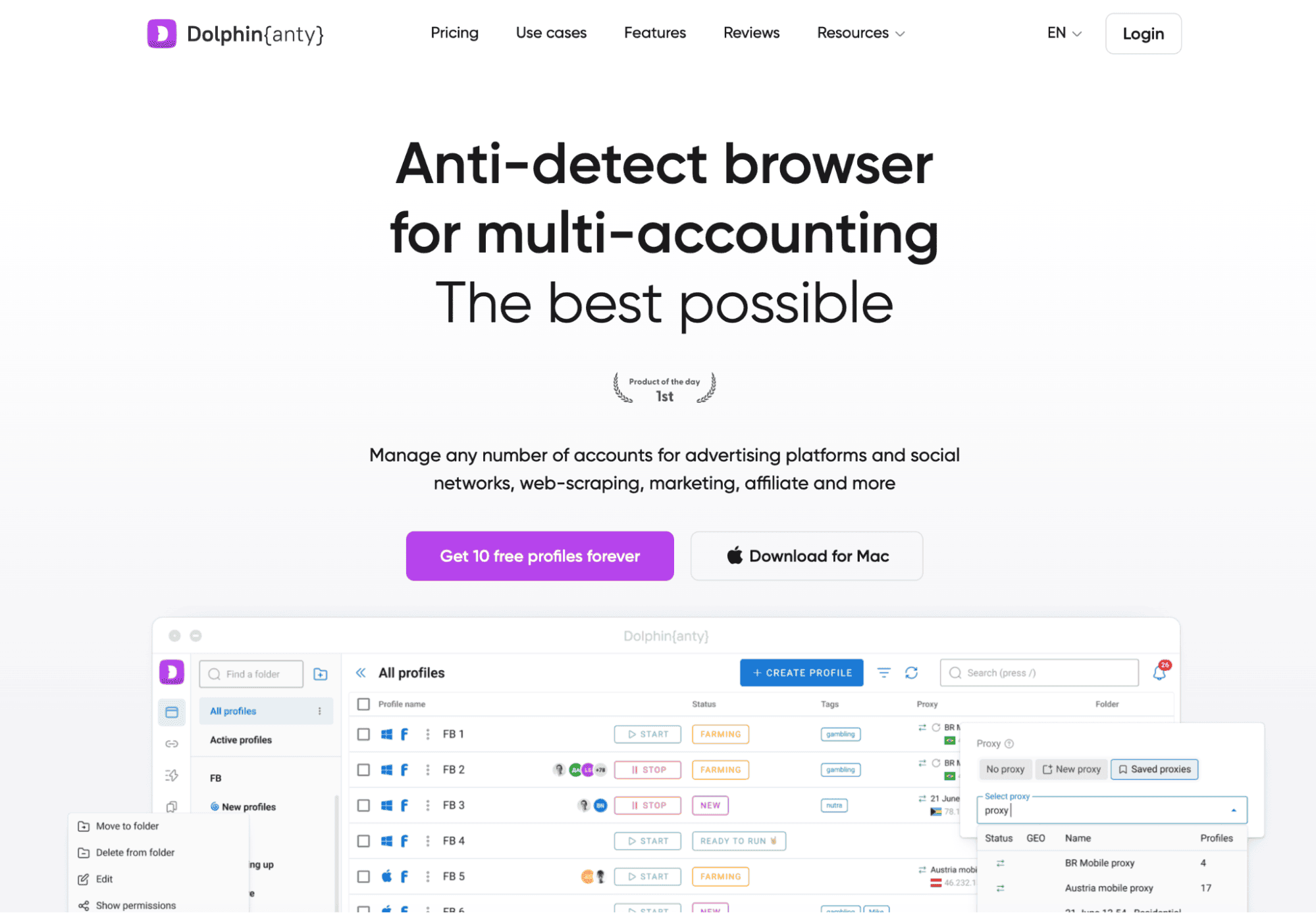
Proxies: You should immediately forget about free options. One IP address can be shared by thousands of users, resulting in minimal trust for such addresses. For working with Facebook, mobile or residential proxies using IPv4 or IPv6 are suitable.
If the same person sends hundreds of requests to Facebook's server, their IP will get banned. However, this will not happen with mobile proxies, as they have access to all IP addresses from the cellular operator. This type of proxy uses a pool of addresses for sending requests. If Facebook bans an IP, it will affect tens of thousands of users.
Residential proxies disguise the arbitrageur as a specific individual from the chosen country, minimizing the likelihood of detection and account blocking.
Before choosing a protocol, it’s advisable to check the prevalence of IPv6 in the GEO where you are farming accounts. For example, in India, 72% of web resources use IPv6, while in Indonesia, the figure is only 12.5%. Both countries rank in the top three for Facebook users. Therefore, using IPv4 in Indonesia is more reliable, as most providers in that region have not yet adapted their equipment to IPv6 technology.
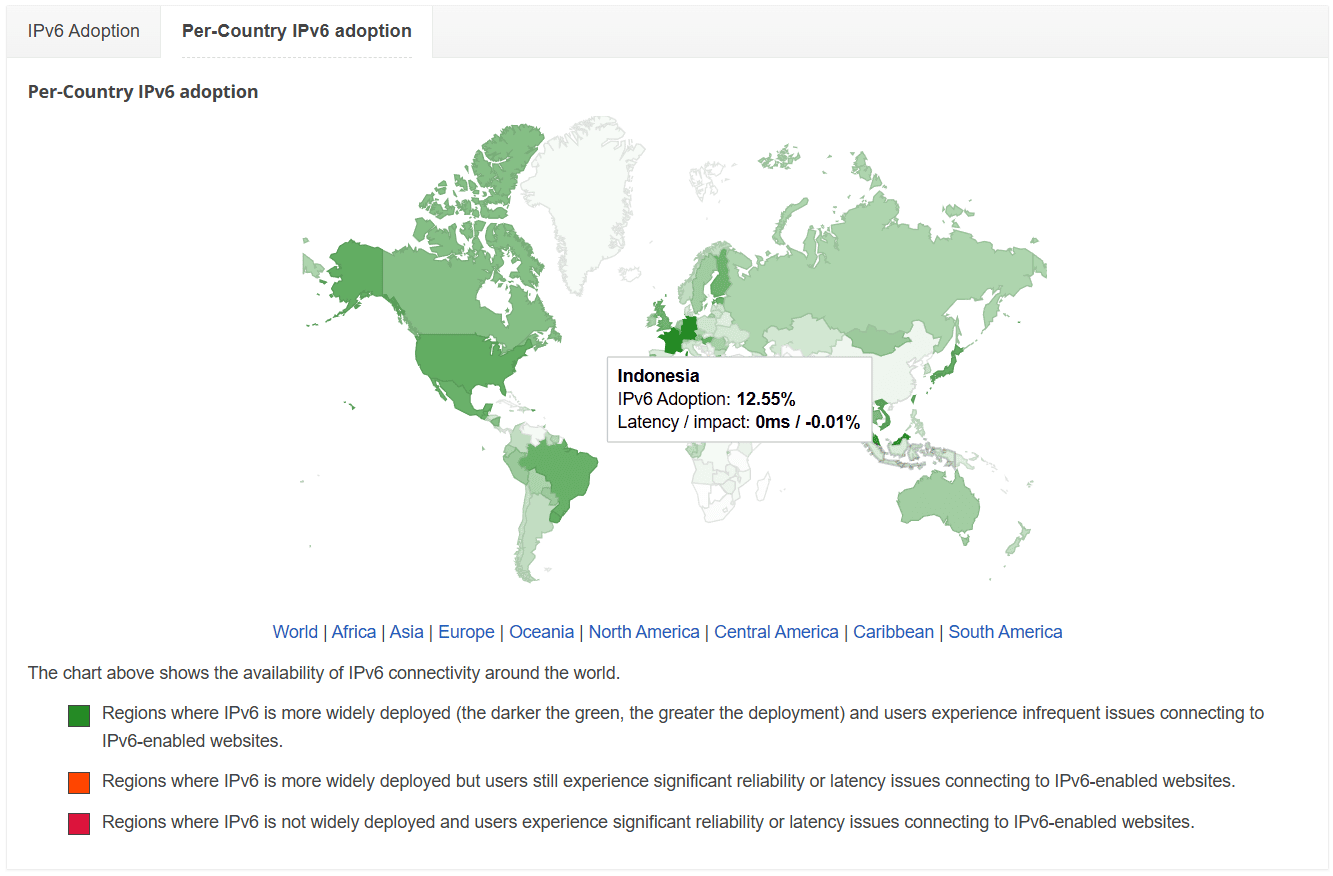
Photos for Profiles: There are two options to obtain images for the account: generate them yourself or source them from other users. It’s preferable to create female profiles, as they tend to attract more friend requests. Here’s a brief overview of each method:
1. Generate Yourself: Open a neural network or visit a site like thispersondoesnotexist.com and create the necessary number of photos of individuals whose appearance is common in the chosen GEO for farming.
2. Download from Other Users: If the arbitrageur opts for this method, they must remove metadata from each image before uploading it to the profile. Next, visit a popular social network or messenger in the region and select 10-12 individuals. Gather 5-7 photos from each profile and upload them to your accounts. Facebook itself should not be used as a source for images, as the system will consider the account fake and ban it.
Email Address Database: If the arbitrageur has an extra 3-4 hours a day, they can register emails manually. However, this is a time-consuming method, so it's more efficient to purchase or download a ready-made database. This can typically be done through thematic forums or Telegram chats, where they are sold in such formats.
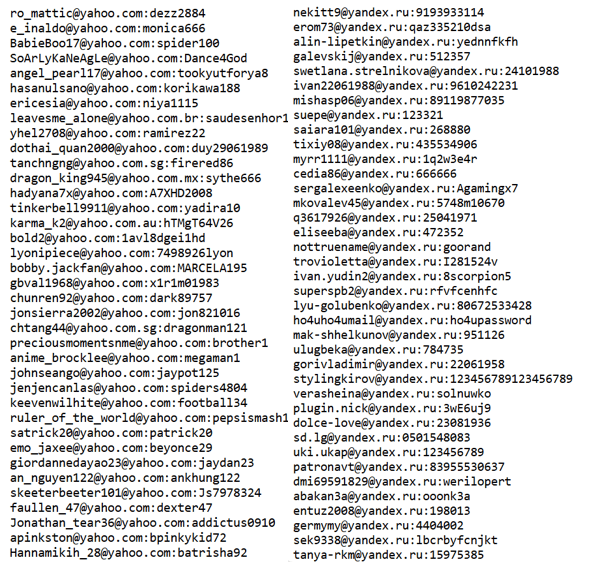
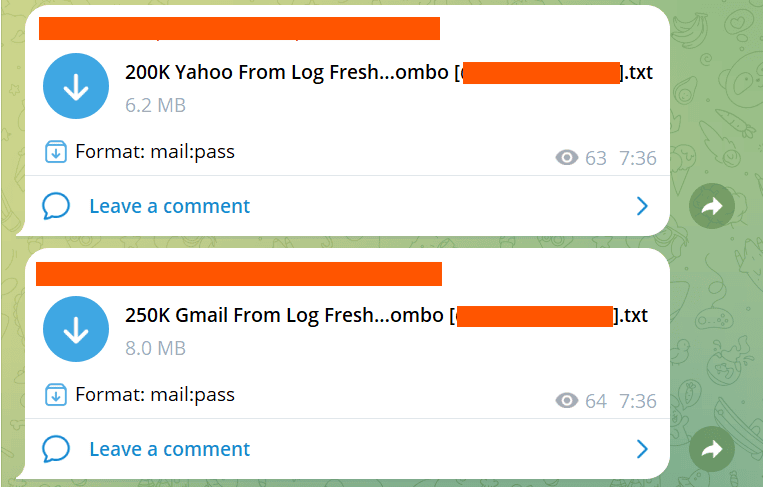
Before making a purchase, it's advisable to request several addresses for testing purposes to avoid wasting money.
Mobile Numbers: You can rent numbers for receiving codes individually, or buy SIM cards in bulk. This depends on how many accounts the affiliate marketer plans to work with. In the long run, it's better to buy SIM cards as it simplifies the process of recovering accounts from bans.
First, create a folder where all account information will be stored: photos, login, password, and used proxies. For convenience, you can use a single Excel spreadsheet that contains all the necessary access data.
After that, start the farming process. Access an anti-detect browser, create a profile, and connect a proxy. The next step is to gather cookies. Some anti-detect browsers offer bots that can do this automatically, but it's better to browse websites manually. Visit a site and select 20-30 pages to visit at varying intervals.

For instance, open one tab, scroll through it, click on internal links, open a registration window, and then leave. Wait a few minutes before visiting another random page, exploring its content, and keeping the page open for 10-15 minutes. The goal is to mimic the behavior of a real user. After this, let the account rest for 1-2 days.
The next stage of farming involves creating a FB account. Record in your spreadsheet or folder the information entered and the registration method. The first account can be registered on the platform, the second through a third-party site, the third by linking a profile to an application, etc. Avoid using the same method consecutively. For example, almost all news sites offer authorization through social networks, including FB. This is where we handle the registration.
Once registration is complete, populate the account. Upload a profile picture, which can be changed after a couple of days, along with a cover photo.

Next, fill in the remaining information that a regular person would include in the first days after registering on a social network—education, work, worldview, interests, hobbies, etc.
When the account is filled, take some time to scroll through the feed, check out groups, follow people, and send a few messages. For the next few days, engage with the account by liking posts, resharing news, and showing other activities. This should be done gradually over 3-5 days, alternating actions.
The final stage of farming is creating a Fan Page. It’s optimal to create the FP 7-10 days after starting to work with the account. This is necessary for the ad network to get accustomed to the device the buyer is using.
First, write the name, description, and categories. The page name should be relevant to the upcoming offer since users will see the FP name when viewing ads. The description can use any words, but avoid adding stop words, which vary by niche and can be easily found online. An approximate list looks like this.

Assign categories based on the offer's vertical.
Next, outline the main content of the FP. Experienced webmasters pay attention to the following elements:
- Photo: It’s better to add an image related to the offer if the product is permitted on the advertising platform. If the offer is prohibited, use an image that hints at the offer.
- Cover: Typically, videos in the format of 820x321 up to 20 seconds are used. Ideally, take creatives that haven't been uploaded to FB yet and that have been individualized.
- Instagram: If there’s an Instagram profile, it’s better to link it to enhance trust with the advertising platform.
It’s also essential to adjust the page settings so that users cannot curse in comments, cannot post their own entries, and that negative comments are automatically removed.

Next, it’s important to warm up the page with posts and reactions. After 7-8 days, you should visit Meta Blueprint to browse through pages dedicated to advertising. Afterward, you can create the Ads Manager and start running ads for engagement.
Before launching a marketing campaign, it’s essential to promote a few posts using paid promotion. To do this, create an advertising post and design it attractively. Set the targeting parameters to a broad audience, then set a budget of $1.5 to $2.
Top up the account balance, run the campaign for a couple of days, and then stop it. After that, you can start promoting your main offer.
The main principle to follow when farming accounts is to act like a real person. This means you shouldn’t complete registration and launch a marketing campaign with $1,000 on the same day, change personal information multiple times a week, or set a spending limit before linking a card.
You should also pay attention to preparing the proxies and anti-detect browsers. If one of these tools fails, even a warmed-up and quality account can get banned after just two or three authorizations. Therefore, it’s crucial to check your proxies and anti-detect tools using specialized services, such as pixelscan.net. If all the checks are marked in green, then you are good to go.
Today, promoting through Facebook is quite challenging. Moderation is becoming stricter, and even campaigns with white offers can get banned before the elections in the U.S. As a result, you’ll either need to spend dozens of hours farming or hundreds of dollars purchasing accounts. Therefore, experienced webmasters are increasingly choosing other networks that don’t require a bunch of accounts to operate and are less affected by political changes globally. In MyBid, affiliates can run campaigns in Push, IPP, Pops, Video, Banner, and Native formats with the support of a personal manager. This makes it easier to turn a profit without significant time and nervous resource expenditure, reducing the need to farm accounts.